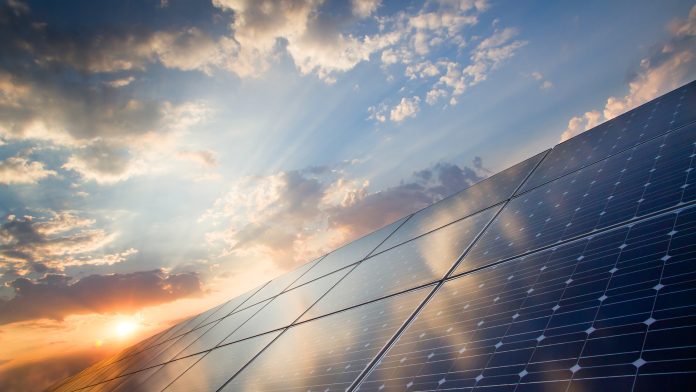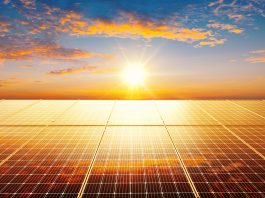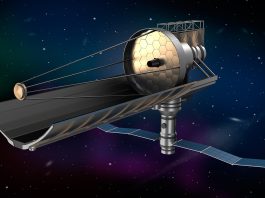The potential for solar energy is boundless; Thomas Garabetian, R&I Manager at SolarPower Europe discusses the most affordable renewable energy solution.
When you first think of solar panels, the first image that comes to mind is probably a solar rooftop, or a solar power plant – but did you know solar energy can be placed on almost everything?
Solar energy is truly booming; in 2023, 402 GW of solar was installed. With this growth, we’re seeing some innovative, unconventional applications, and unique solutions, to help accelerate the energy transition.
With this growth, we’re seeing see some innovative, unconventional applications, and unique solutions, to help accelerate the energy transition. From building-integrated photovoltaics (BIPV) and vehicle-integrated photovoltaics (VIPV) to solar bike paths, solar railways, and floating solar, the power of the Sun is being harnessed in a variety of ways.
Let’s explore these perhaps less well-known, pioneering technologies.
Building-integrated solar: The beauty of solar energy
BIPV is one such creative solar application. BIPV involves incorporating solar modules directly into a building’s components, i.e., façade, windows or even roof tiles. They are different to the more traditional solar installed on building rooftops; the solar is an integral part of the building component, instead of just placed on the building surface.
Once installed, the solar modules generate renewable energy onsite, while improving the building’s aesthetic. This emphasis placed on aesthetical and architectural integration (i.e., variety of colours, metallisation technique), is a key distinguishing factor of BIPV.
BIPV is also an innovative alternative solution for buildings that are unsuitable for rooftop solar and would otherwise have no solar installed.
Notable BIPV landmarks in Europe include La Seine Musicale, a music and performing arts centre located in the Parisian suburbs. The centre holds an egg-shaped auditorium, and a solar panel wall designed to follow the Sun’s path.
Other examples can be seen with Helmholtz-Zentrum Berlin’s (HZB) BIPV laboratory in Berlin; this is the world’s first BIPV lab, and it also has a BIPV system on the exterior of the building itself.

© SolarPower Europe
The 360 copper indium gallium selenide (CIGS) solar panels on the test station, are currently generating around 30 MWh of energy per year; this is equivalent to powering ten to 12 family flats in Berlin.
The unique blue/purple colour of the panels is produced from the physical process of interference layers, which reflect a specific point on the colour spectrum. The lab is a pioneering example of how to sustainably design buildings.
BIPV systems are also ideal for renovating historical buildings; they elevate, rather than tarnish a building’s architectural essence. The Swiss headquartered SunStyle has beautifully renovated a neo-Gothic Church in Sarpsborg, Norway, and the Strand Church, in Tau, Norway, a historic 19th century wooden church.

Research is also being conducted into how to integrate PV systems into infrastructure, for instance in the design of electric vehicle (EV) charging stations.
Undoubtedly, this showcases the endless opportunities with BIPV.
Many EU-funded projects are driving the uptake of BIPV. SolarPower Europe is a partner of INCREASE a four and a half year Horizon Europe funded project, which will aim to accelerate the market uptake of building and integrated PV technology systems, through improved technological innovation, quality and standardisation.
The BIPV solar market accounted for seven of 209GW of the overall cumulative solar installed in the EU at the end of 2022.
However, BIPV is important for preserving prestige, historical buildings and areas. With the EU’s recent agreement of a landmark rooftop solar standard last December, we will likely witness the technology’s transformative impact on the solar market over the coming years.

Solar vehicles: Driving on sunshine
Vehicle-Integrated PV (VIPV) is another promising technology which involves integrating solar energy directly in a vehicle, including cars, planes, trucks, and ships.
Research in Belgium, Germany, and the Netherlands has shown that integrating solar into electric and non-electric vehicles can extend their driving range. It can also power additional systems such as air conditioning, heating, lighting, and onboard electronics, which can avoid overloading the battery; this allows EVs to travel greater distances.
However, the full benefits of a VIPV system will only be realised if vehicles are built to incorporate solar from the beginning of the manufacturing process, rather than retrofitted afterwards. Integrating solar into a vehicle is a complex process which presents specific challenges and requires extensive modifications. For example, solar cells are subject to more vibration, need to be able to deal with shading, are exposed to different environments and temperatures, and must meet additional safety standards etc.
Germany’s Fraunhofer Institute for Solar Energy (ISE) has developed the technology further, integrating solar cells into a car’s bonnet for the first time ever. Researchers installed a 115W prototype array comprised of multiple solar panels, onto a Volkswagen during a lamination process.
Franhaufer ISE are also advancing VIPV systems for trucks. One 3.5kW PV system, installed on the roof of an 18-tonne electric truck, was able to cover 5-10% of the truck’s electricity demand. PV systems are particularly beneficial for heavy-weight vehicles like trucks, as they can effectively ‘reduce power consumption,’ and allow them to carry a sufficient weight.
EV models with VIPV are commercially available; for example, Toyota and Hyundai have models. VIPV companies like SonoMotors and Lightyear are also developing commercial technical solutions to bring solar EVs to our roads, reflecting the promising nature of the technology.
Solar planes are even in existence! In July 2023, the first unmanned solar-powered plane completed its first high altitude flight, reaching 66,000ft into the stratosphere.
The Swiss Solar Impulse Foundation has also produced a solar plane, the first to be able to fly day and night without any fuel.
The company CSEM is working on another Swiss project SolarStratos, developing a plane able to reach the stratosphere, powered by solar energy.
Other budding solar applications in the transport sector
We are also beginning to see the emergence of solar bike paths, solar roads, and solar railways! At the end of last year, two new solar bike-paths spanning 1000m2 became operational in the Netherlands. The system holds a 21% efficiency per square metre; the two paths will generate 160 MWh/year of energy during the first year. It’s an innovative application, particularly for countries with land scarcity issues like the Netherlands.
Turning to railways, the Swiss Start-up company Sun-ways has installed solar ‘like carpet’ on railway tracks in Switzerland.
The German railway company Deutsche Bahn are also testing solar on railway sleepers. Solar noise barriers for trains and highways are even being developed by the INCREASE project.
These systems showcase the infinite possibilities with solar energy!
Floating solar: Floating on sunshine
Solar also floats; floating solar is a growing solution worldwide, which sees solar panels installed on a floating system or structure, on an inland or marine water body.
The technology is on the precipice of mainstream expansion; the global floating solar market is anticipated to surpass the six gigawatt threshold by 2031.
A recent study from the Nature journal shows that ‘floating solar panels on reservoirs could produce three times as much electricity as the entire EU.’
For this reason, SolarPower Europe recently published its ‘Floating PV Best Practice Guidelines,’ to drive high-quality floating PV projects, and codify the best practice and expertise gained from these first projects.
One example is a hybrid power plant developed by Amarenco in Montpezat d’Agenais, France, on the site of a former quarry; it has a total installed capacity of 4.8 MW. This floating PV plant will save 250 tonnes of CO2 annually.

In particular, offshore solar represents a new frontier for solar. It is a technology that can be installed by itself, or hybridised/co-located with other renewable energy technologies like offshore wind for example. Merganser is one example of an offshore floating PV demonstration project, jointly developed by SolarDuck and RWE, situated in the Dutch North Sea. Another example is the Norwegian company Ocean Sun, which has begun streamlining its designs for a hybrid floating solar pilot project.
Offshore solar energy is a technology that holds great potential.
What is on the horizon for solar energy?
BIPV, solar vehicles, solar bike paths, solar railways, and floating solar; these are just a few of the incredible solar applications worthy of more attention. Each application illuminates the diverse ways in which we can deploy solar. Undoubtedly, they are just scratching the surface of what is possible.
One thing is clear, solar will need to be deployed everywhere if we are to achieve the energy transition. While in various stages of development, these technologies will no doubt become mainstream over the coming years.
With continued research and development, we can probably expect to see even more innovative solar applications! Watch this (solar-powered) space.
Please note, this article will also appear in the seventeenth edition of our quarterly publication.









